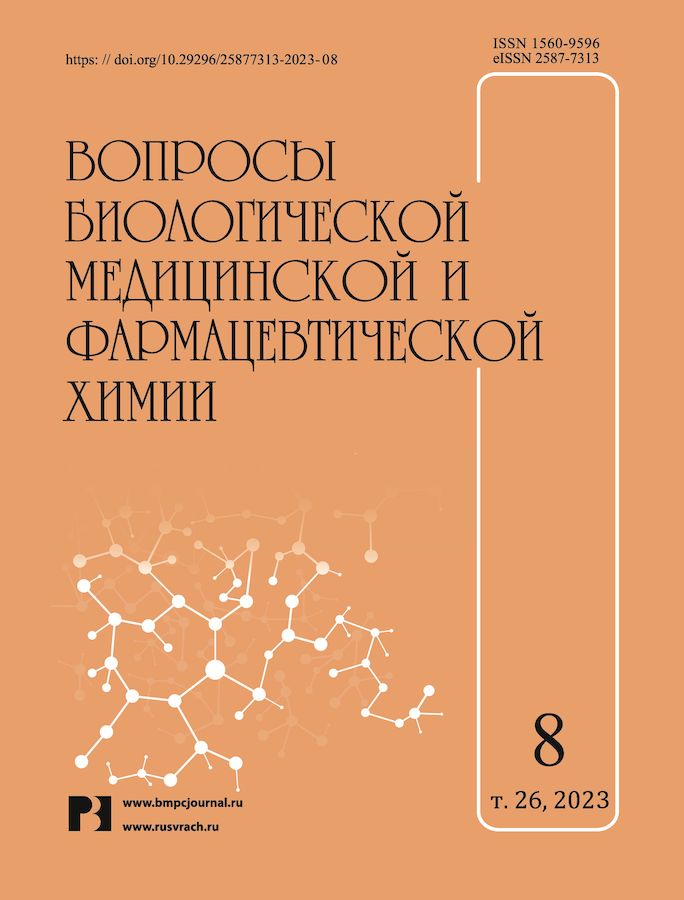Influence of Rhaponticum uniflorum and Serratula centauroides dry extracts on the conditional reactions development with negative reinforcement in white rats
- Authors: Markova K.V.1, Razuvaeva Y.G.1, Toropova A.A.1, Olennikov D.N.1
-
Affiliations:
- Institute of General and Experimental Biology, SB RAS
- Issue: Vol 26, No 8 (2023)
- Pages: 51-58
- Section: Problems of experimental biology and medicine
- URL: https://journals.eco-vector.com/1560-9596/article/view/568989
- DOI: https://doi.org/10.29296/25877313-2023-08-07
- ID: 568989
Cite item
Abstract
The study purpose: to evaluate the effect of the Rhaponticum uniflorum and Serratula centauroides dry extracts on the development of conditioned reactions with negative reinforcement in white rats.
Materials and research methods. The studies were conducted on Wistar white rats. Dry extracts of R. uniflorum and S. centauroides in doses of 50, 100 and 200 mg/kg were administered per os to animals of the experimental groups. In the first series of experiments, the effect of the studied extracts on the development of conditional reactions of visual differentiation and active avoidance in intact animals was evaluated; in the second series – on the formation and preservation of the conditional reaction of passive avoidance against the background of acute hypoxia.
Research results. It was found that R. uniflorum (at doses of 50 and 200 mg/kg) and S. centauroides (at doses of 100 and 200 mg/kg) extracts contribute to the acceleration of conditional reactions of visual differentiation production by 20-23% compared with the control. The most rapid formation in the section was observed in animals receiving R. uniflorum extract at a dose of 100 mg/kg. Against the background of the introduction of S. centauroides extract in doses of 100 and 200 mg/kg, the number of samples spent on the formation of active avoidance decreased by 21 and 23%, R. uniflorum extract in similar doses – by 27 and 25%, respectively, compared with the control. In animals treated with extract R. uniflorum at a dose of 200 mg/kg and S. centauroides extract at doses of 100 and 200 mg/kg, 1 hour after hypoxic exposure, conditional reaction of passive avoidance persisted in 83-92%, on day 3 – in 58% of animals. Against the background of the introduction of R. uniflorum extract at a dose of 100 mg/kg, active avoidance was formed in 100% of animals, and was preserved after 24 and 72 hours in 83 and 67% of animals.
Conclusion. R. uniflorum and S. centauroides extracts contribute to the acceleration of the development of conditioned reflexes with negative reinforcement both in intact animals and against the background of a hypoxic state. The most pronounced nootropic effect of the studied extracts is shown at a dose of 100 mg/kg.
Full Text
About the authors
K. V. Markova
Institute of General and Experimental Biology, SB RAS
Author for correspondence.
Email: kristen_kartland@mail.ru
Leading Engineer
Russian Federation, Ulan-UdeYa. G. Razuvaeva
Institute of General and Experimental Biology, SB RAS
Email: kristen_kartland@mail.ru
Dr.Sc. (Biol.), Senior Research Scientist
Russian Federation, Ulan-UdeA. A. Toropova
Institute of General and Experimental Biology, SB RAS
Email: kristen_kartland@mail.ru
Ph.D. (Biol.), Senior Research Scientist
Russian Federation, Ulan-UdeD. N. Olennikov
Institute of General and Experimental Biology, SB RAS
Email: kristen_kartland@mail.ru
Dr.Sc. (Pharm.), Head of the Laboratory of Biomedical Research
Russian Federation, Ulan-UdeReferences
- World Health Organization. Ageing and Health. https://www.who.int/news-room/fact-sheets/detail/ageing-and-health.
- Uddin M. J., Zidorn S. Traditional Herbal Medicines Against CNS Disorders from Bangladesh. Natural Products and Bioprospecting. 2020; 10: 377–410. doi: 10.1007/s13659-020-00269-7.
- Amirzargar N., Heidari-Soureshjani S., Yang Q., et al. Neuroprotective effects of medicinal plants in cerebral hypoxia and anoxia: a systematic review. The Natural Products Journal. 2020; 10(5): 550–565. doi: 10.2174/2210315509666190820103658.
- Shishmarev V.M., Shishmareva T.M. Harakteristika cenopopulyacij Serratula centauroides (Compositae) v Zabajkal'e. Izvestiya Irkutskogo gosudarstvennogo universiteta. 2021; 36: 16–23.
- Shantanova L.N., Dashiev D.B., Radnaeva D.B. i soavt. Adaptogeny v tibetskoj medicine. Byulleten' VSNC SO RAMN. 2008; 3: 175.
- Nikolaeva I.G., Cybiktarova L.P., Garmaeva L.L. i soavt. Opredelenie soderzhaniya ekdisteroidov v syr'e Rhaponticum uniflorum i Serratula centauroides metodom hromatospektrofotometrii. Zhurnal analiticheskoj himii. 2017; 72(8): 733–741. doi: 10.7868/S0044450217080047.
- Olennikov D.N., Kashchenko N.I. Rhaponticum uniflorum: himicheskij sostav i biologicheskaya aktivnost'. Himiya rastitel'nogo syr'ya. 2018; 2: 5–20.
- Rukovodstvo po provedeniyu doklinicheskih issledovanij lekarstvennyh sredstv. Chast' pervaya. Pod red. A.N. Mironova. M.: Grif i K, 2013; 944 s.
- Tatarinova N.K. Adaptogennye svojstva ekstraktov Fornicium uniflorum L. Avtoref. dis…kand.med.nauk. Ulan-Ude, 2017; 20 s.
- Pchelenko L.D., Metelkina L.G., Volodina S.O. Adaptogennyj effekt ekdisteroidsoderzhashchej frakcii Serratula coronata L. Himiya rastitel'nogo syr'ya. 2002; 1: 69–80.
- Mogilenko T.G., Denisenko O.N., Voronkov A.V. i soavt. Izuchenie adaptogennoj i antigipoksicheskoj aktivnosti substancii 20E, vydelennoj iz serpuhi pyatilistnoj (Serratula quinquefolia Bieb. ex Willd.), kul'tiviruemoj na Severnom Kavkaze. Sovremennye problemy nauki i obrazovaniya. 2015; 2-3. URL: http://science-education.ru/ru/article/view?id=23717.
- Tsujiyama S., Ujihara H., Ishihara K. et al. Potentiation of GABA-induced inhibition by 20-hydroxyecdysone, a neurosteroid, in cultured rat cortical neurons. Japanese Journal of Pharmacology. 1995; 68: 133–136.
- Chu W., Zhan M., Zhu G. et al. Effect of ecdysterone on proliferation and differentiation of rat neural stem cells in vitro. Chemical Abstracts. 2009; 1088064.
- Hu J., Luo C.X., Chu W.H. et al. 20-Hydroxyecdysone Protects against Oxidative Stress-Induced Neuronal Injury by Scavenging Free Radicals and Modulating NF-kB and JNK Pathways. PLoS ONE. 2012; 7(12): e50764. doi: 10.1371/journal.pone.0050764.
- Rendeiro C., Rhodes J.S., Spencer J.P.E. The mechanisms of action of flavonoids in the brain: direct versus indirect effects. Neurochemistry International. 2015; 89: 126–139.
- Matias I., Buosi A.S., Gomes F.C.A. Functions of flavonoids in the central nervous system: astrocytes as targets for natural compounds. Neurochemistry International. 2016; 95: 85–91.
- Heitman E., Ingram D.K. Cognitive and neuroprotective effects of chlorogenic acid. Nutritional Neuroscience. 2017; 20(1): 32–39.
- Kumar G., Mukherjee S., Paliwal P. et al. Neuroprotective effect of chlorogenic acid in global cerebral ischemia-reperfusion rat model. Naunyn-Schmiedeberg's Archives of Pharmacology. 2019; 392(10): 1293–1309.
- Lu H., Tian Z., Cui Y. et al. Chlorogenic acid: A comprehensive review of the dietary sources, processing effects, bioavailability, beneficial properties, mechanisms of action, and future directions. Comprehensive reviews in food science and food safety. 2020; 19(6): 3130–3158.
Supplementary files









